myOption’s School Matching
Matching students to their dream school by taking the “scaries” out of college applications.
myOptions | Responsive Web & iOS native app | 2018
The Future of School Matching
Students (and their families) put themselves under a lot of pressure to find, get accepted, and attend the “right” school. In most cases, students don’t know where to begin, relying on tuition prices and GPA scores as a starting point. Not only can that ideology discourage and intimidate students, but it’s just plain wrong. myOptions wanted to design a feature that changed how students thought about school lists - moving away from college stats and moving towards the quality of a student's overall college experience.

Thinking Through the Solution
I sat down with the VP of myOptions and asked her to describe the problem we were trying to solve. She explained how the main goal of the app was to help students who didn’t have access to private college counselors get the same opportunities as those who did - starting with a personalized list of schools that were a good fit for them (socially, financially, and academically).
We decided on a three-part school matching experience that would lead preliminary conversations with students who had no clue where to start. Students first filled out a preference survey, where myOptions learned about a student’s social and academic likes and dislikes. Students’ preferences would be added to the myOptions algorithm along with their GPA, test scores and other information to match them to their top 20 schools. At any point in the future, students could update their preferences and to get an improved list of schools.

Discovering What a Student Cares About
Together we came up with questions that made the preference survey quick and easy to answer using branch logic. We first asked students what high-level values they cared about (such as cost or sports) and disregarded the ones they didn’t. For each of those values, we’d dig a little deeper and ask them targeted questions regarding what they preferred and what they didn’t. Those responses would help the myOptions matching algorithm match students to schools.
Discover what student's care about, remove what they don’t and help define the unknown.
-
Identify important social and academic areas
Whether it is a “must-have” or “deal-breaker” we want to know what they care about.
-
Remove areas students don't have an opinion on
These will be thrown out of the pool since they won’t be defined.
-
Offer quizzes for all remaining areas
These are the characteristics that users are unsure about - and the ones we will help them with.
-
Reveal School Matches
Once we know all we can about the student, we'll match them with schools based on their preferences, test scores, GPA and other information.
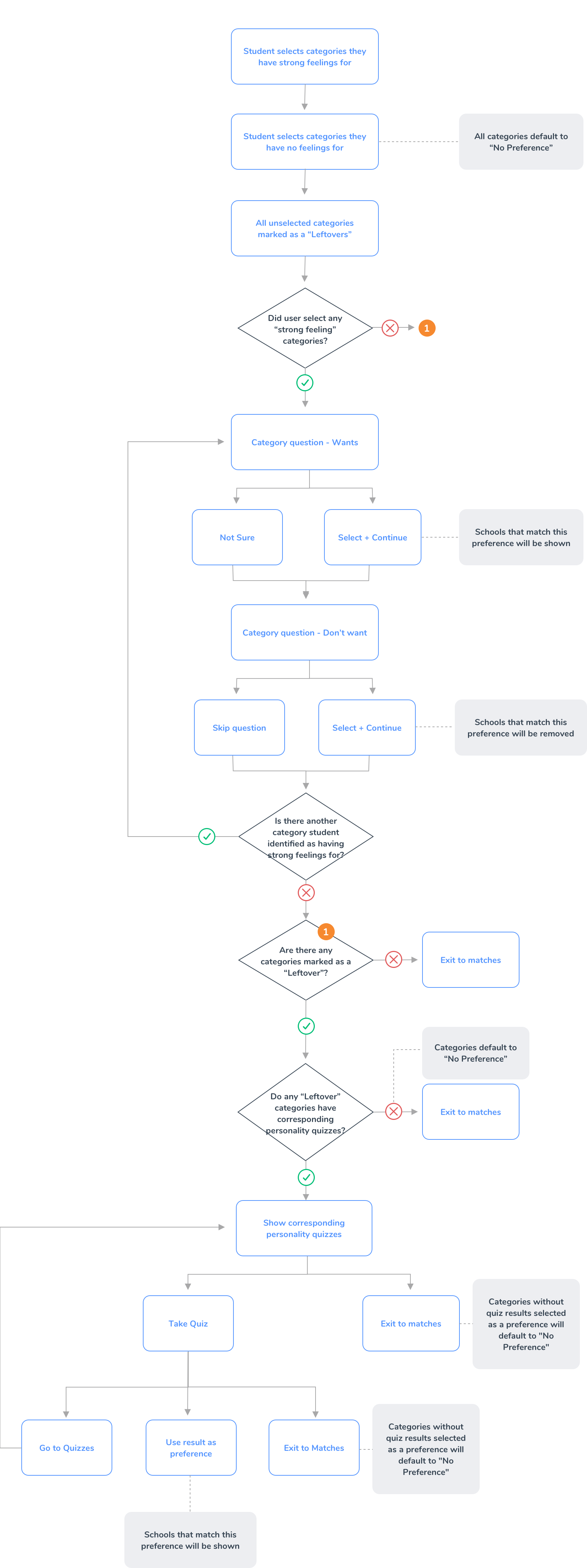
Initial Sketches
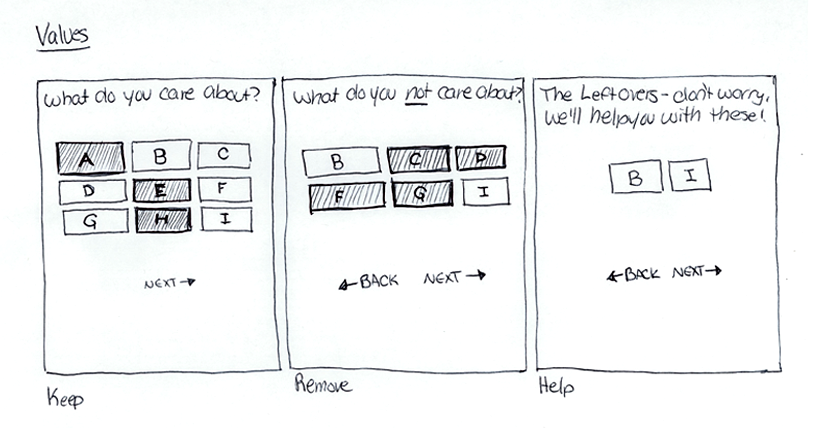
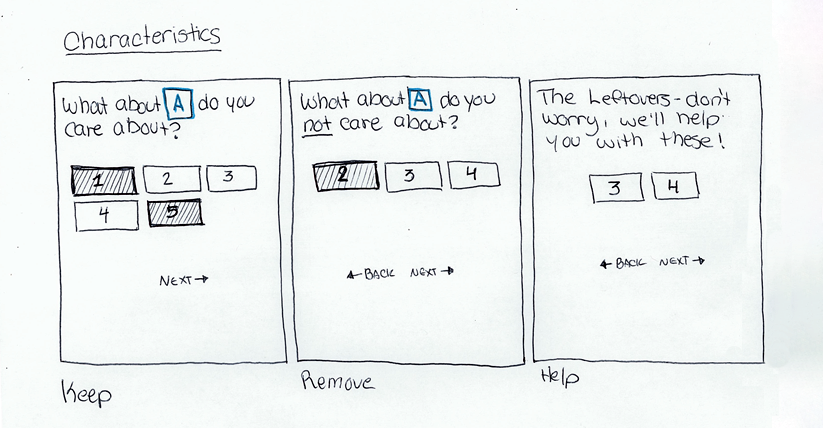
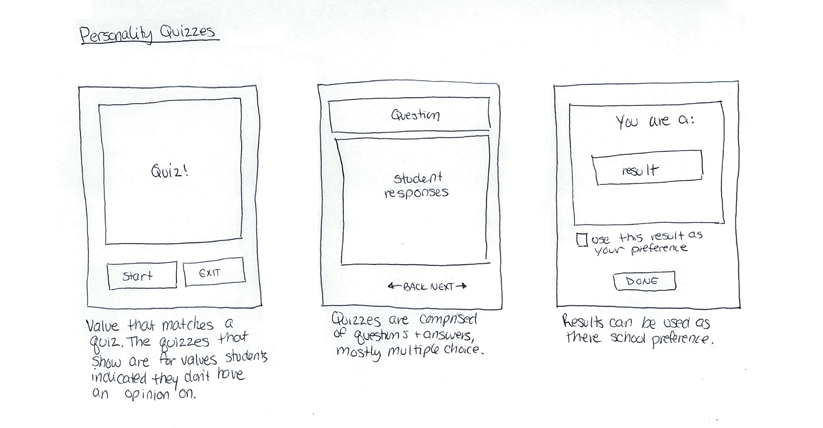
Mockups using Google Slides
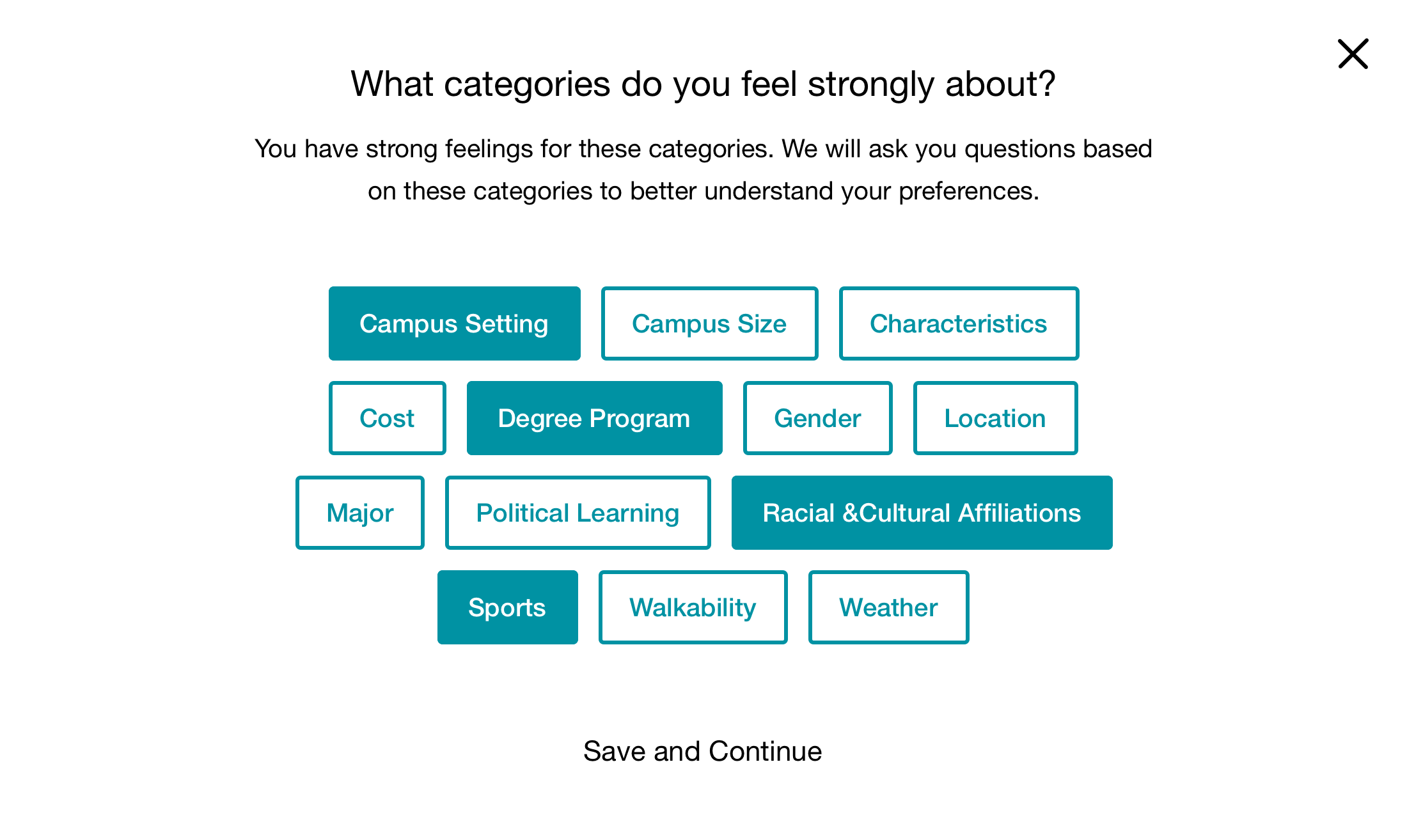
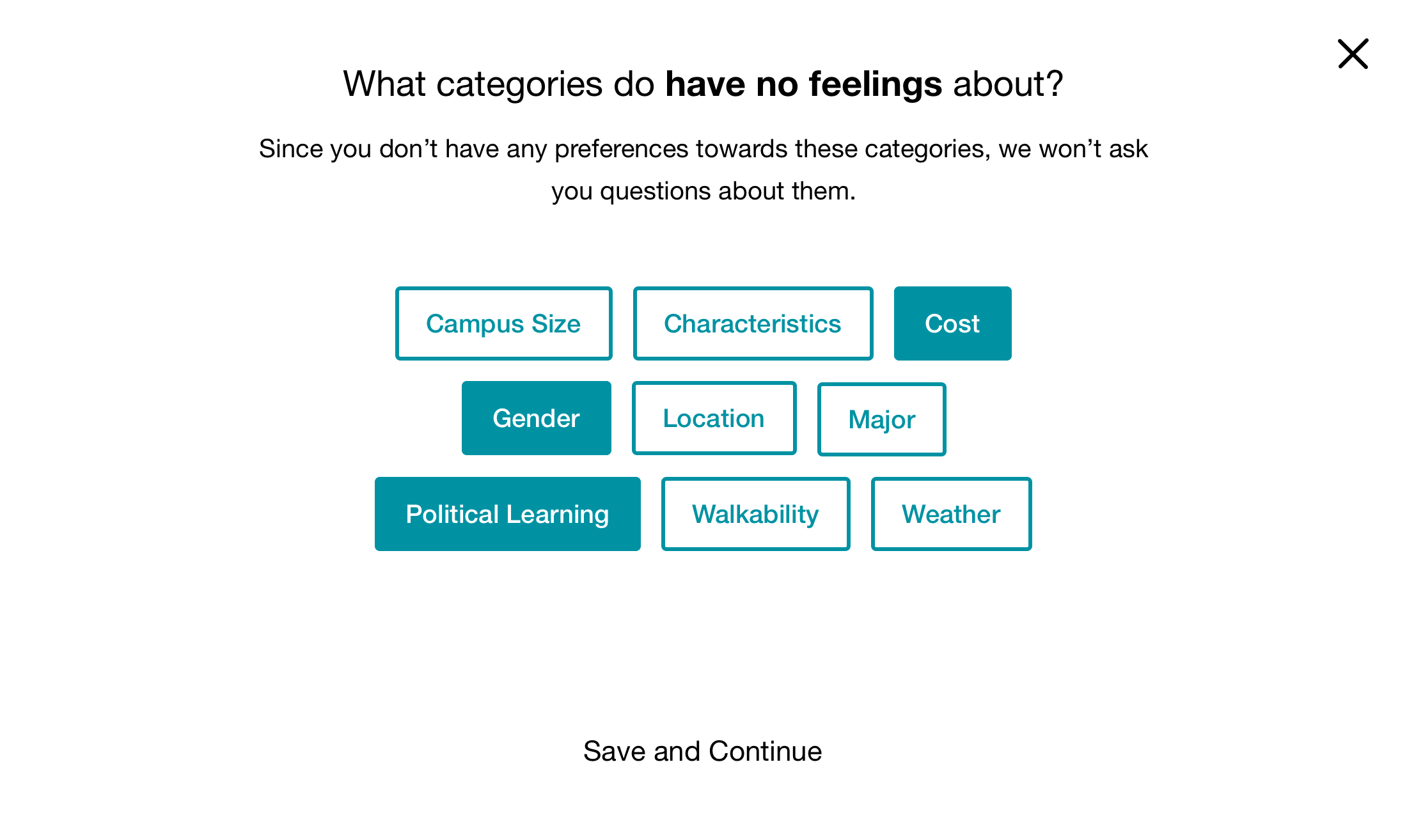
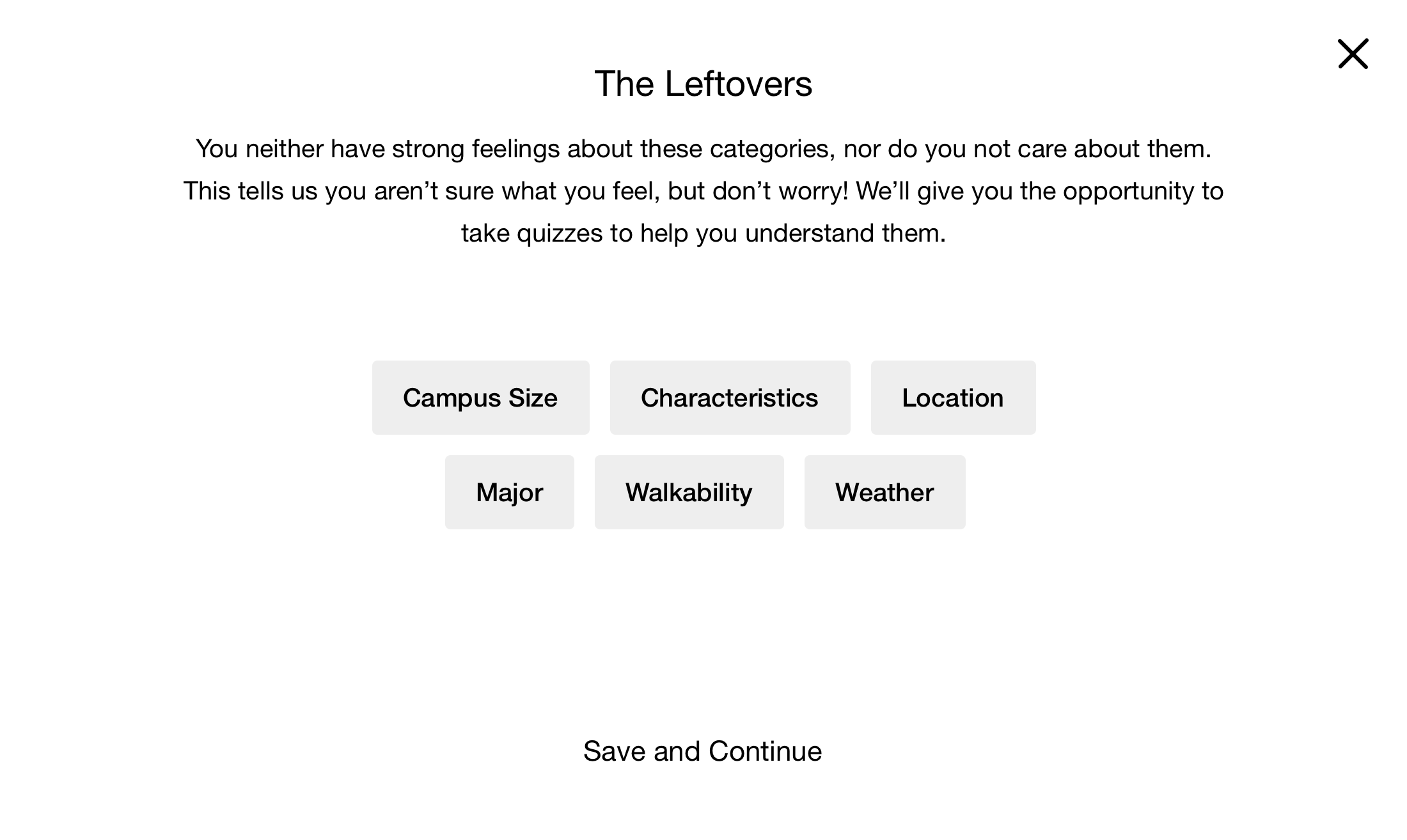
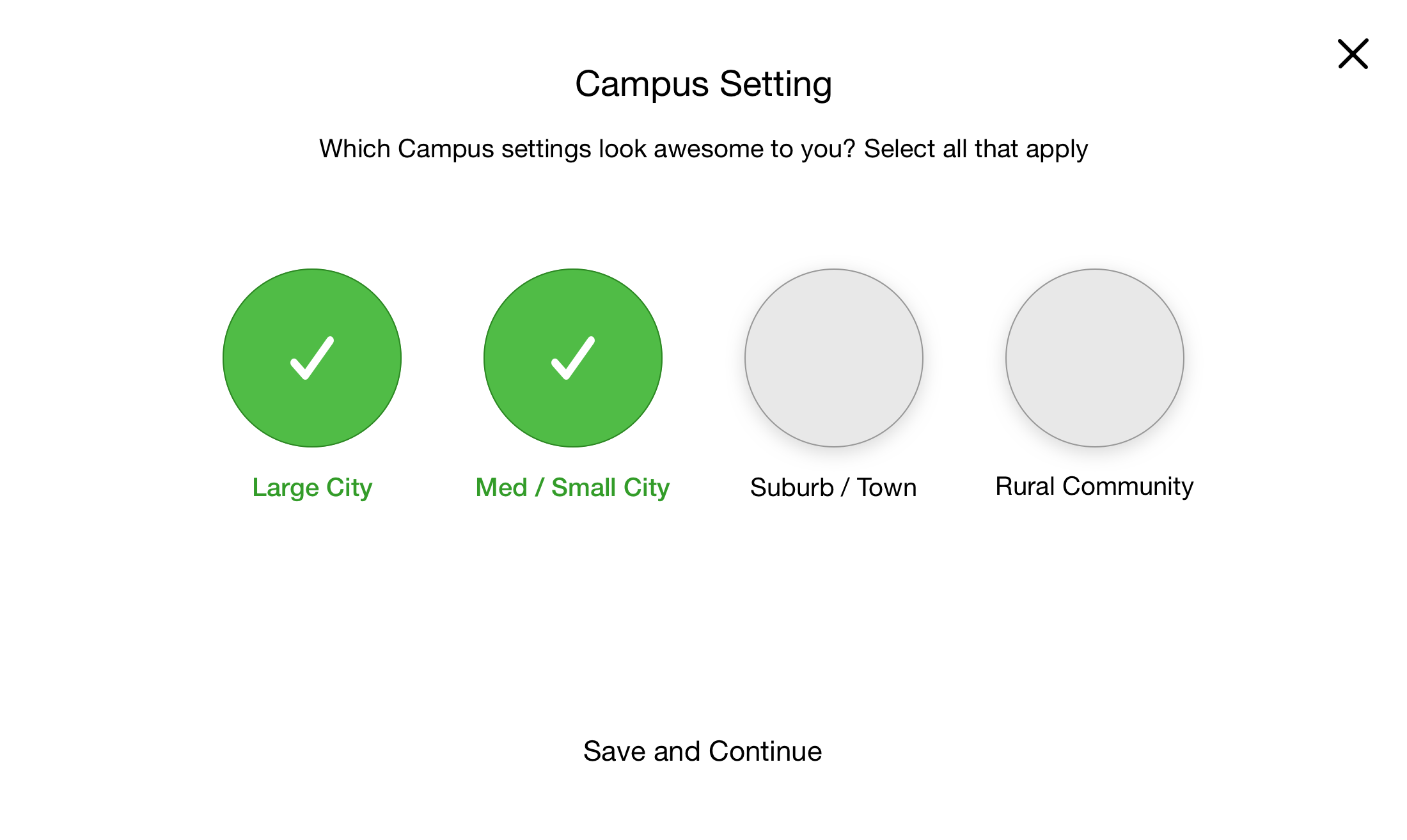

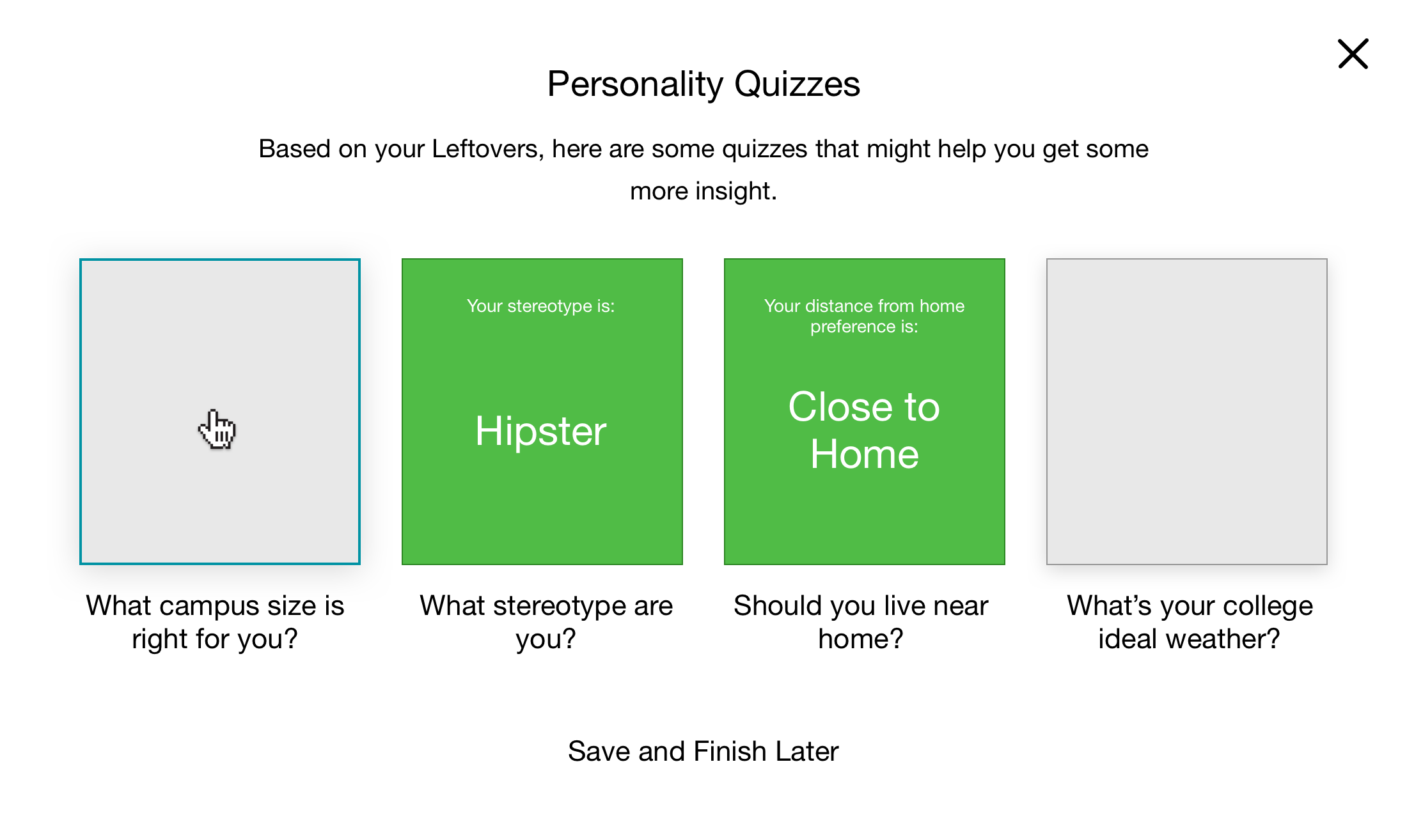
A change of plans...
While we were building School Matching, business direction changed. We were informed that myOptions was taking over all student facing features from its parent company, NRCCUA, which included their pen and paper survey. Because NRCCUA relied heavily on the responses from their survey, we had to pivot our original experience to match theirs.

The Preference Survey
Using the questions from NRCCUA's legacy paper survey we able to determine what student's cared about and what they didn't when choosing a college. We also simplified the experience by removing personal quizzes which had outdated pop culture references and content.
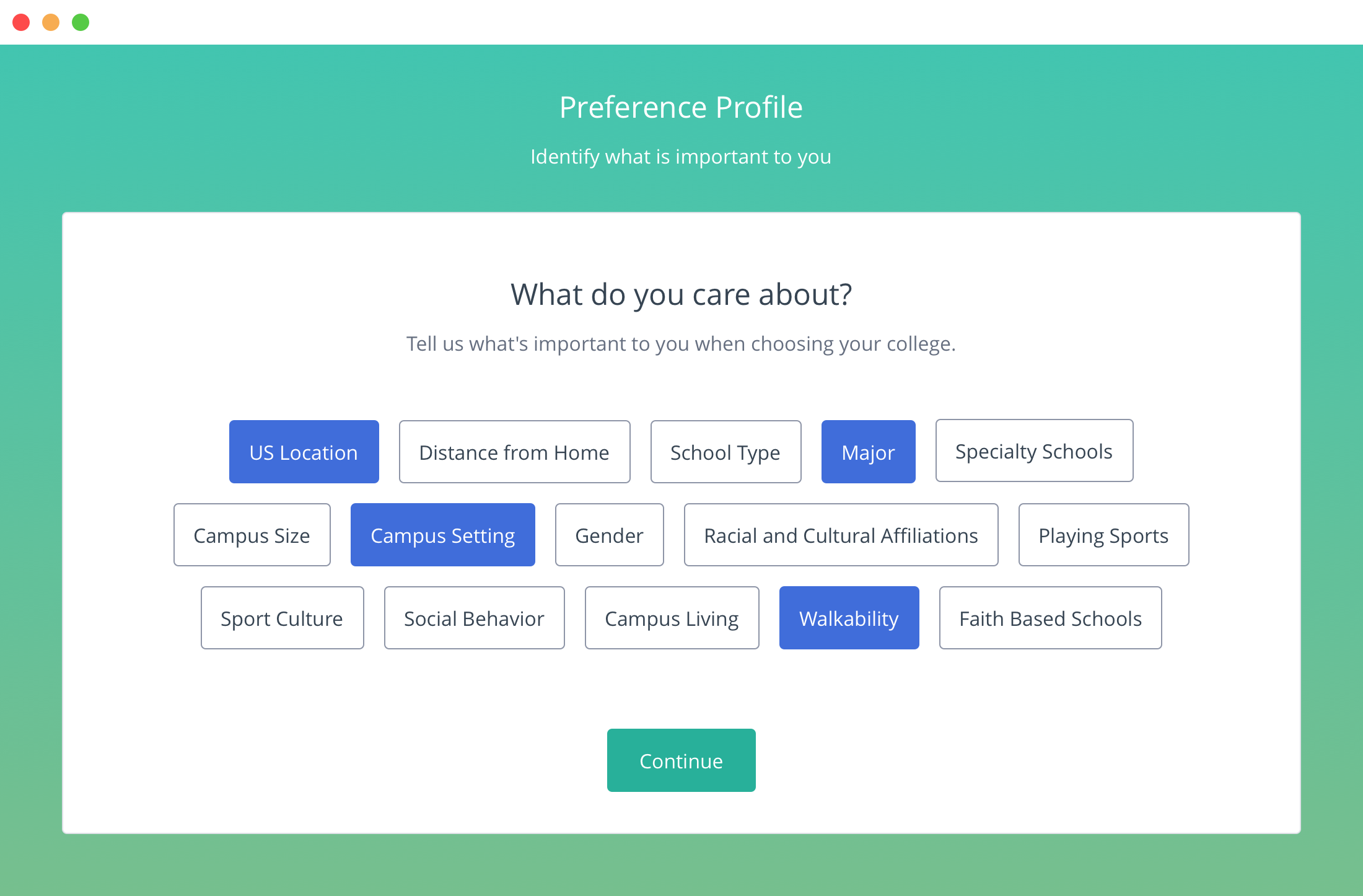
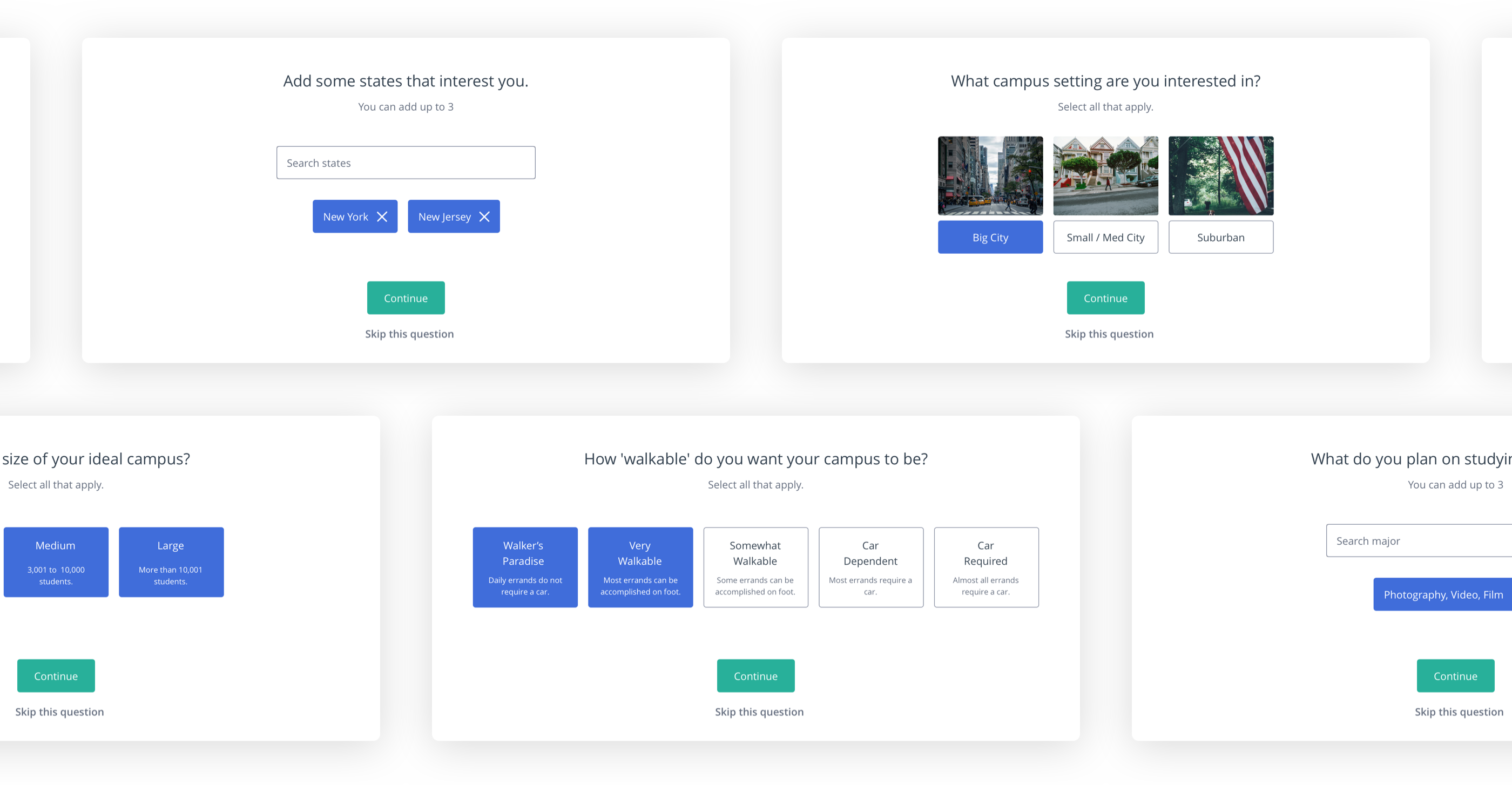
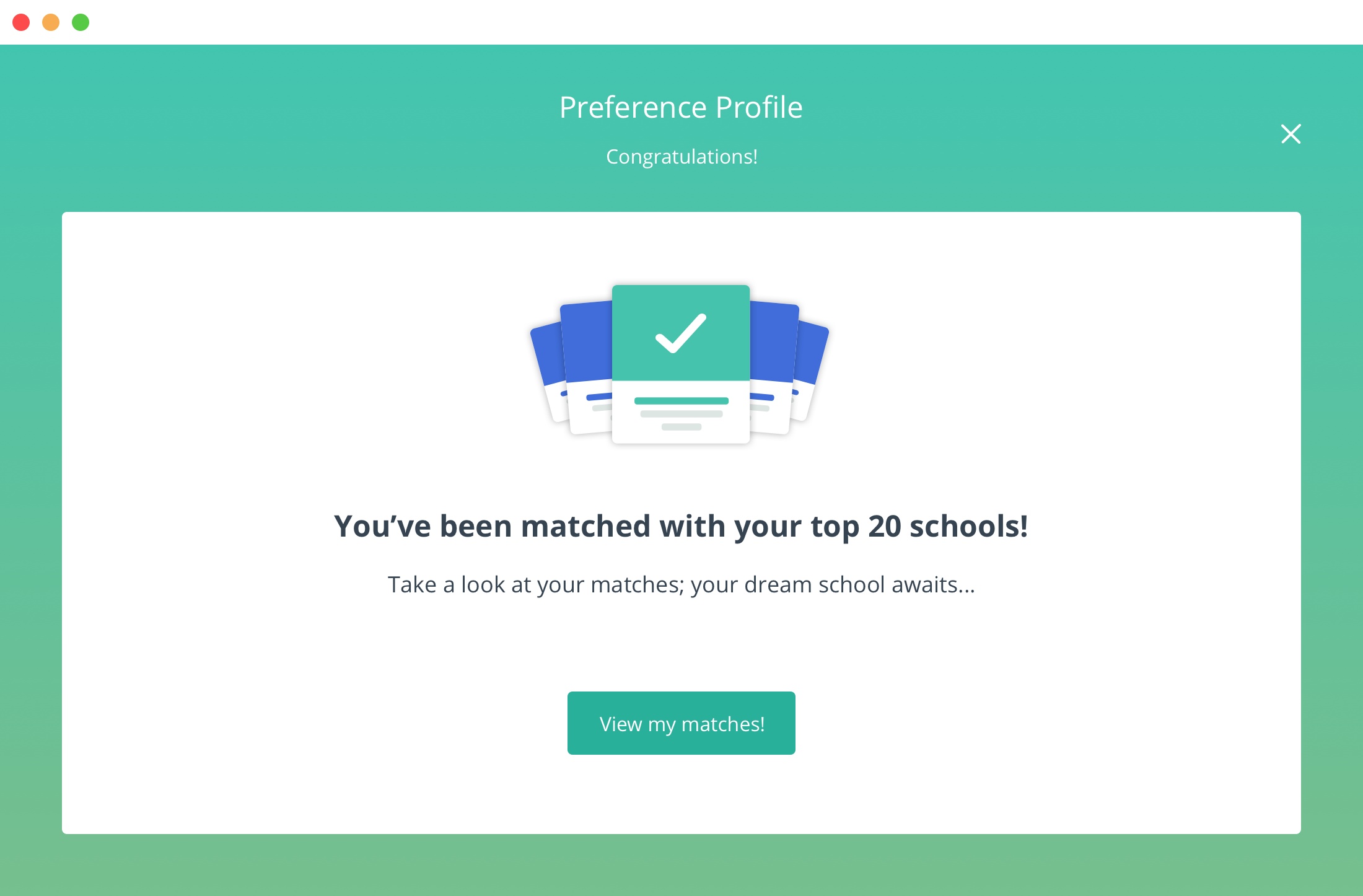

Matched Schools
Once the student completes the survey, myOptions uses a proprietary algorithm to match them with 20 schools that are likely to be a good fit. Students can review the details of each school and decide which ones are worth pursuing and which ones aren't.
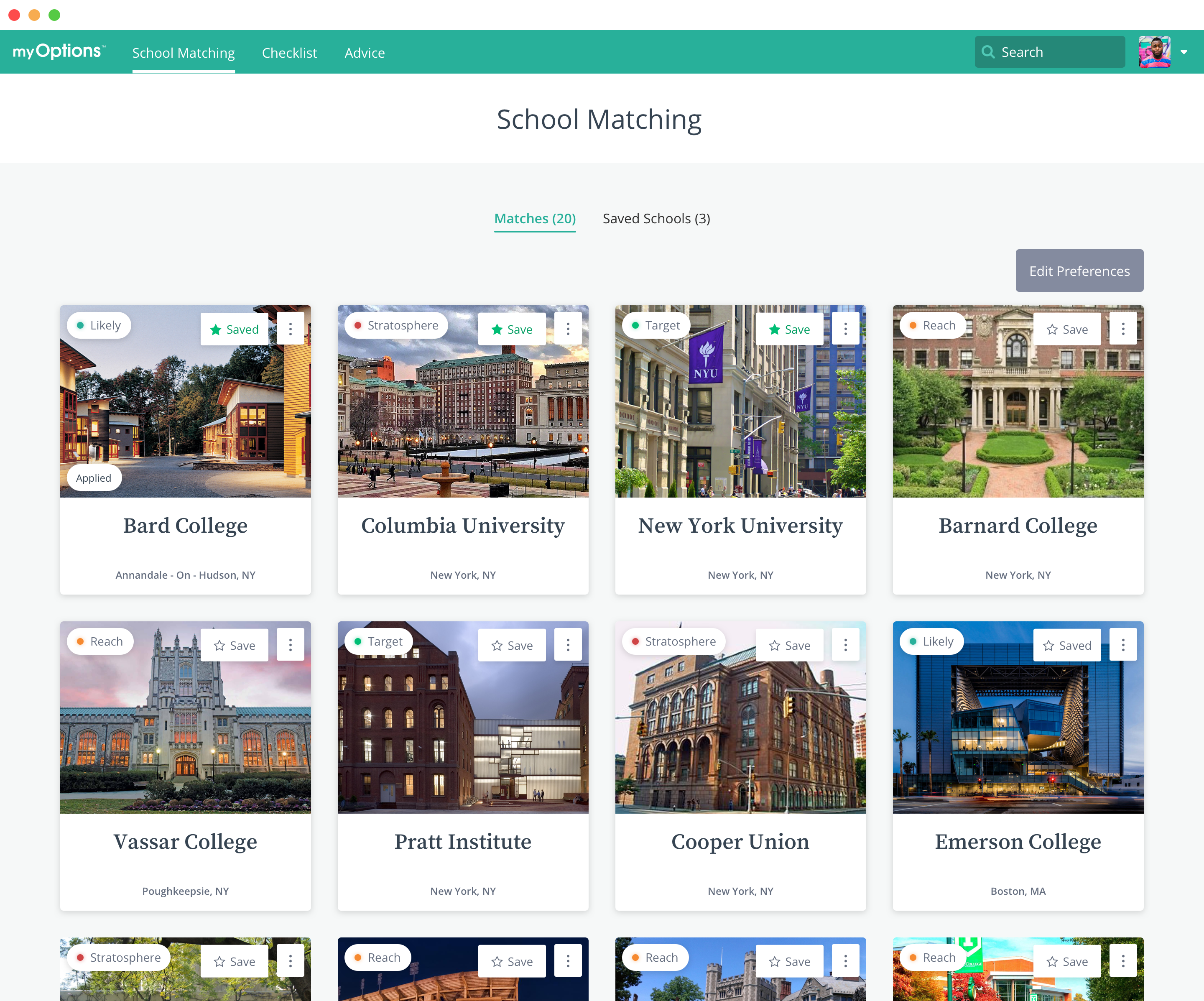

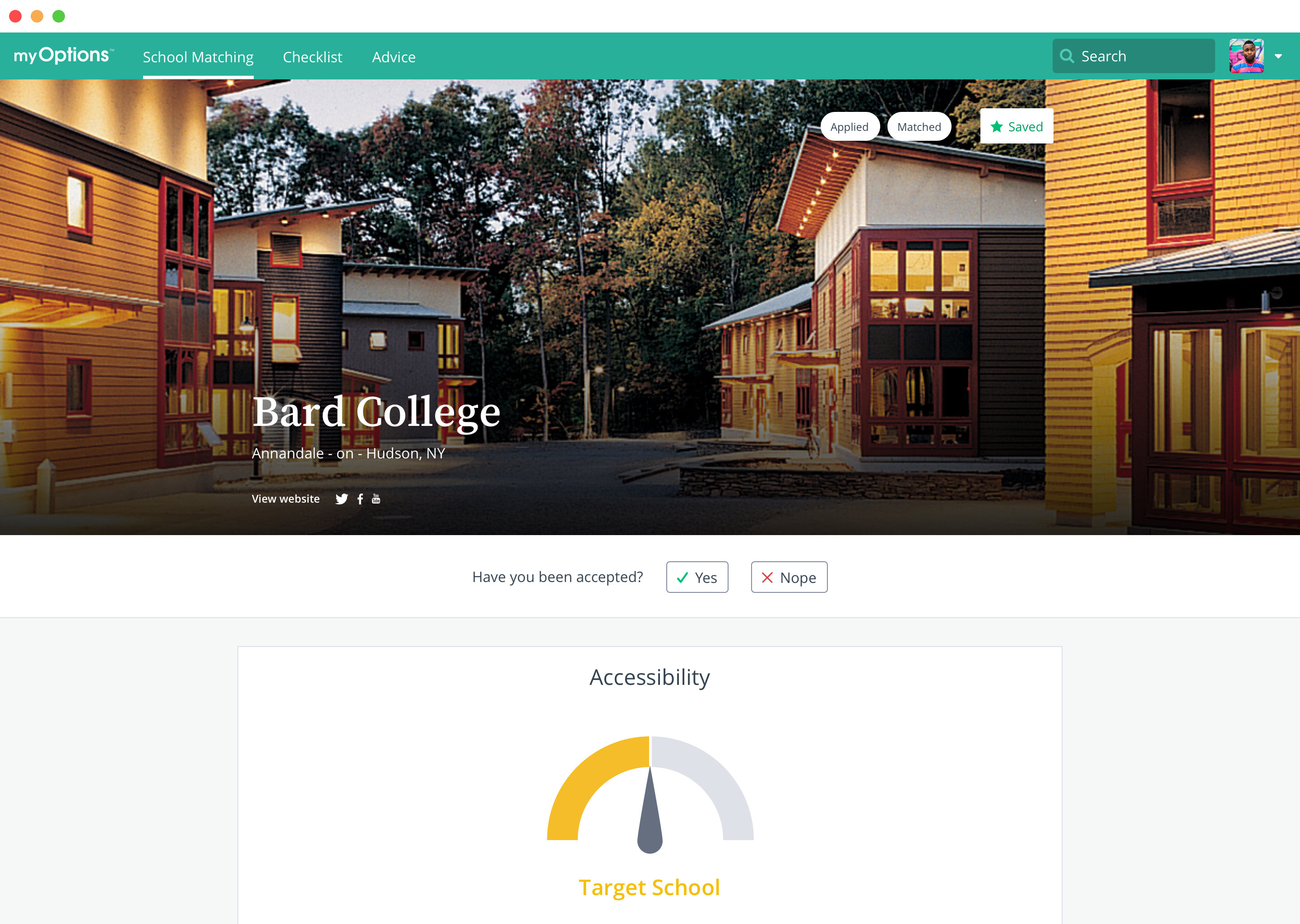

Updating School Matches
We also gave students the flexibility to change their preferences at any time ensuring that the schools we suggest would properly reflect their ideal college experience.
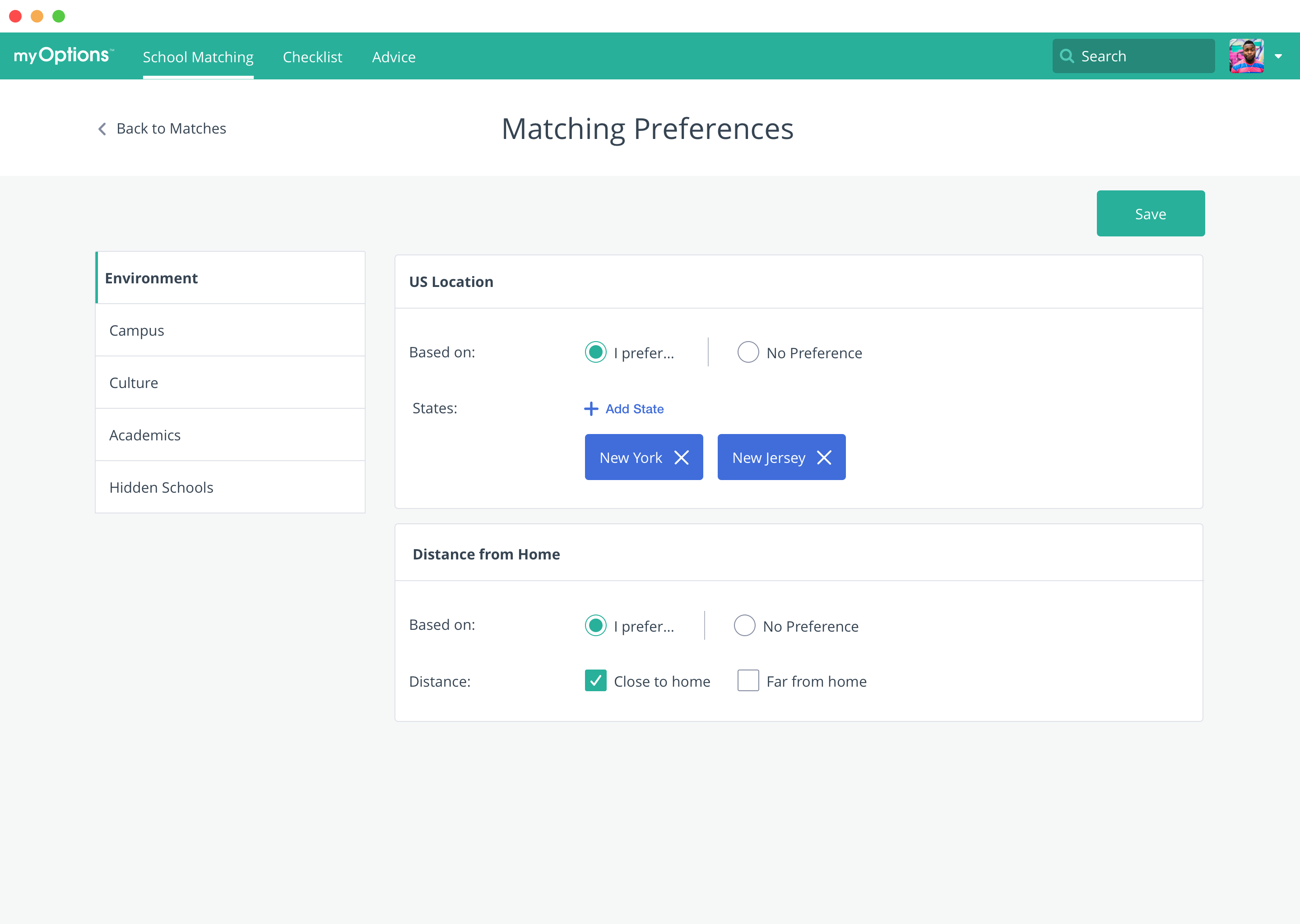
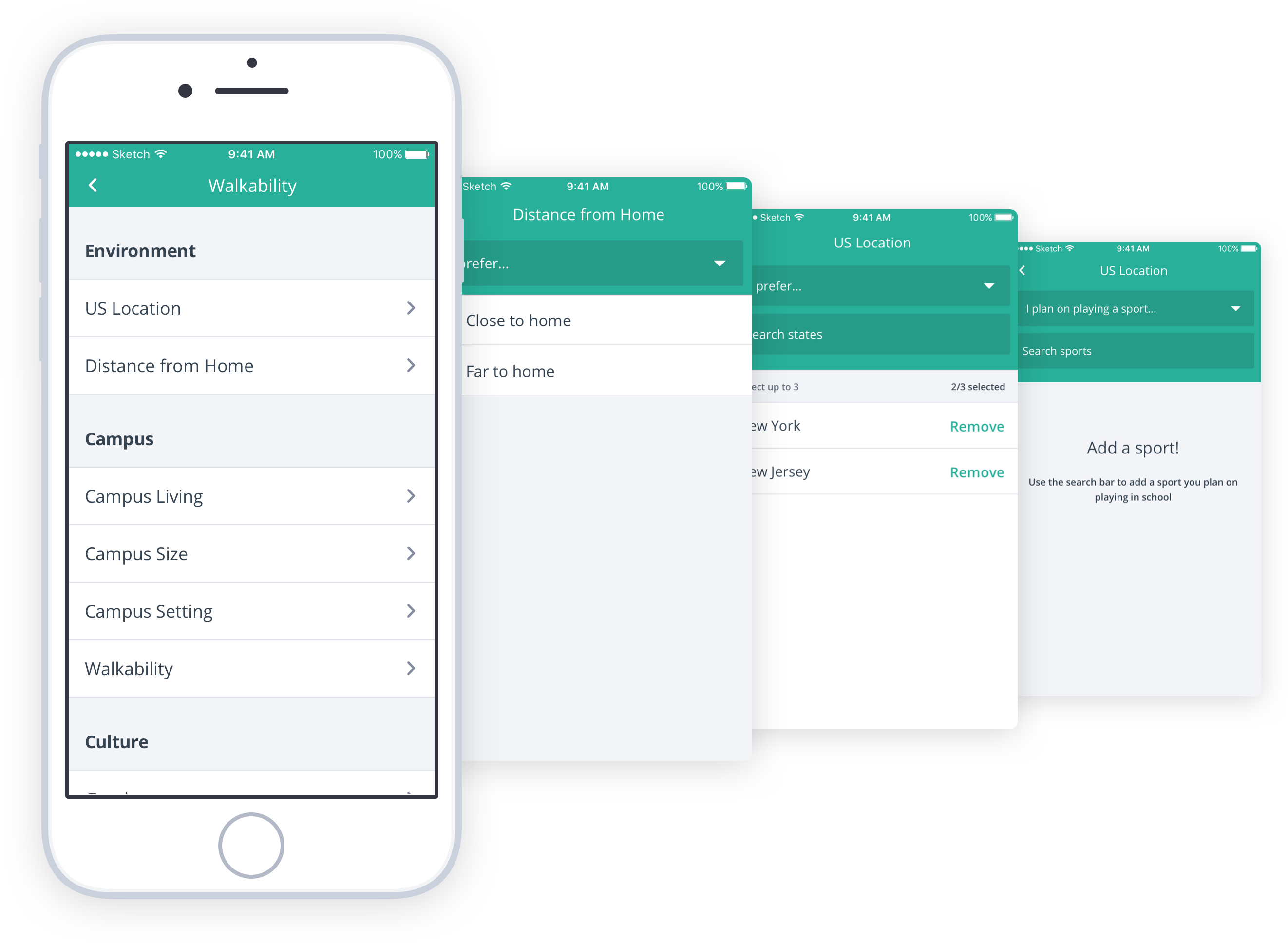
The Results
Better Options, Better Schools
After it's launch, we saw a lot of activity on School Matching which confirmed our hypothesis that students would be interested in the feature. Students completed the preference survey with a low drop-off rate and where bookmarking matched schools. In fact, matched schools had a higher percentage of being bookmarked than any other suggested school on the platform.
As students who interacted with School Matching start attending and graduating college, we'll review our analytics and student feedback to get a better understanding of how successful the algorithm is at matching students to schools. More specifically, we plan on reviewing how many students enrolled and happily graduated from a matched school.